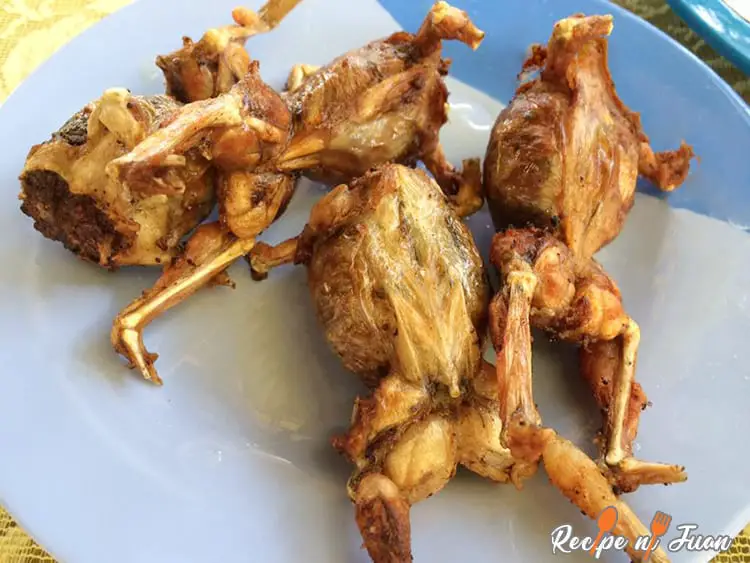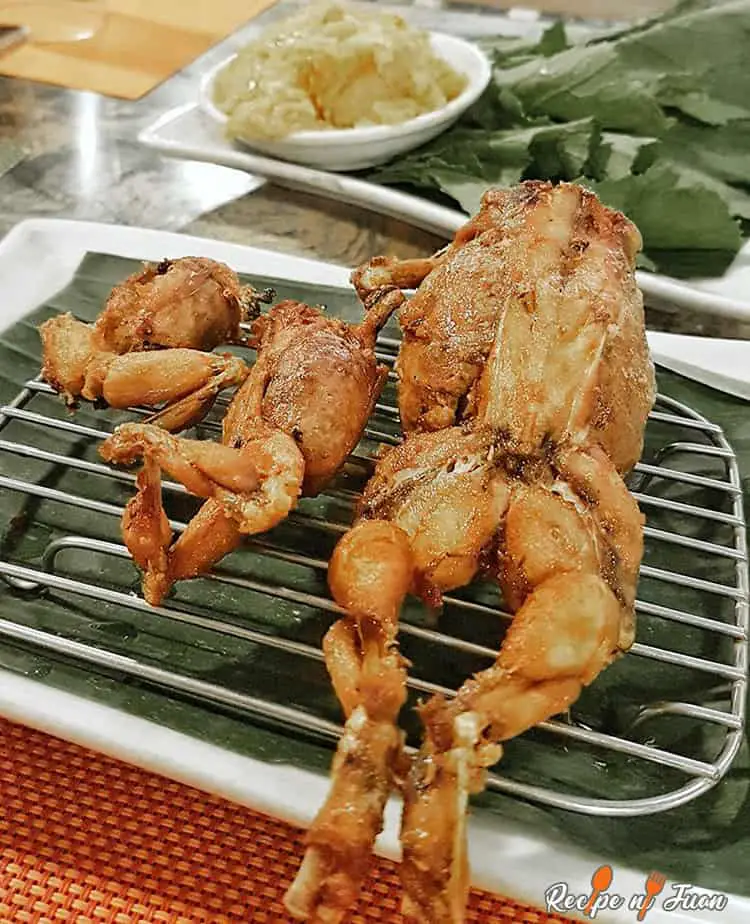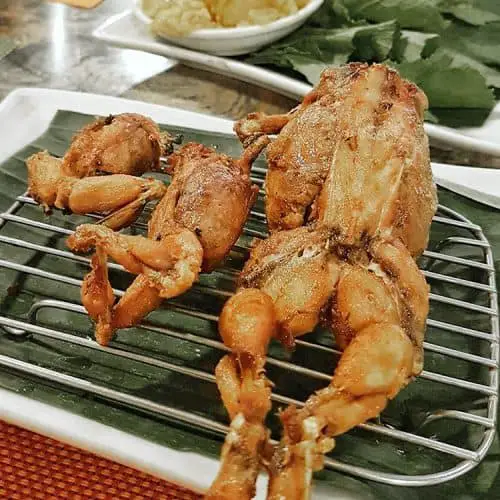Betute recipe (stuffed deep-fried frog)
Betute or “Stuffed Frog” in English is considered to be one of the Kapampangan exotic dishes in the Philippines.
Before we proceed to the Betute Recipe itself, enjoy yourself on a little history and background of this exotic food.

People in Pampanga also call this “Tugak” which literally means frog. Its taste is almost similar to that of chicken, and it’s actually very good.
A lot of farmers in Pampanga used to be contingent on rainwater to irrigate their farmlands.
Youngsters would then catch the frogs, which came out during the wet season, while their elders cultivated the soil or planted rice.
Outsmarting the frogs has been a customary “family bonding” habit for some folks.
The word Betute is derived from a play of words on Butete, which translates to “Tadpole” in the local vernacular. Betute is the intact frog bloated with pounded pork, so it looks like an absolutely fat frog.

Check out our new cookbook
Bitemybun's family recipes with complete meal planner and recipe guide.
Try it out for free with Kindle Unlimited:
Read for freeIn this post we'll cover:
Betute Recipe History
Betute originated in Pampanga and is a specialty involving of deep-fried rice field frogs filled with minced pork.
The French may have prepared frogs’ legs into a tasty delicacy, but Filipinos went to step up and took it to the next level.
They catch a frog, stuff and fill it with pork and other flavorings, then deep-fry it. Kapampangans are really proud that their original dish, Betute, is very exclusive to them.
This can be recognized to the fact that the frogs they use as a chief ingredient for this dish are rice field frogs, which are herbivores and eat small insects.
These are truly larger than the usual frogs that are sold for food in furthermost wet markets. Though, smaller sized frogs are still decent enough to make Betute.

Edible frogs or as what we may call it “Palakang Bukid” and ground pork are the main ingredients of the Betute Recipe combined with the ground pork, garlic, onion, salt, pepper, vinegar, and any other spices one wants to add for the stuffing.
The Betute Recipe is definitely easy to prepare, follow our recipe below and enjoy your delicious frogs!

Betute recipe (stuffed deep-fried frog)
Ingredients
- 8 big edible frogs (palakang bukid)
- ¼ kilo ground pork
- 3 cloves garlic minced
- ½ tsp salt (for pork stuffing)
- 1 tbsp vinegar (for pork stuffing)
- ½ tsp ground pepper (for pork stuffing)
- 1 tsp salt (for marinade)
- 4 tbsp vinegar (for marinade)
- 1 tsp ground pepper (for marinade)
- 1½ tsp brown sugar (for marinade)
Instructions
- In a bowl, combine the ground pork, minced garlic, salt, vinegar, and ground pepper. Set aside.
- Clean the frog and remove the skin, head and cut the belly to remove the intestines.
- Use the ground pork mixture as belly stuffings. Sew to prevent the stuffing’s from spilling out.
- Mix the marinating mixture: salt, vinegar, ground pepper, and brown sugar.
- Pour into the stuffed frogs.
- Let it stand for 30 minutes.
- The let it sun-dried for another 30 minutes.
- Deep fry until golden brown.
- Serve with fried rice or steamed plain rice.
Video
Nutrition
Check out our new cookbook
Bitemybun's family recipes with complete meal planner and recipe guide.
Try it out for free with Kindle Unlimited:
Read for freeJoost Nusselder, the founder of Bite My Bun is a content marketer, dad and loves trying out new food with Japanese food at the heart of his passion, and together with his team he's been creating in-depth blog articles since 2016 to help loyal readers with recipes and cooking tips.
